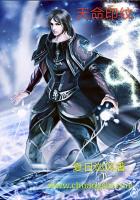Next day, at eight o'clock in the evening, a large chariot, drawn by four horses in mourning trappings, and covered with black velvet like the chariot, which was, besides, adorned with little streamers on which were embroidered the arms of Scotland, those of the queen, and the arms of Aragon, those of Darnley, stopped at the gate of Fotheringay Castle. It was followed by the herald king, accompanied by twenty gentlemen on horseback, with their servants and lackeys, all dressed in mourning, who, having alighted, mounted with his whole train into the room where the body lay, and had it brought down and put into the chariot with all possible respect, each of the spectators standing with bared head and in profound silence.
This visit caused a great stir among the prisoners, who debated a while whether they ought not to implore the favour of being allowed to follow their mistress's body, which they could not and should not let go alone thus; but just as they were about to ask permission to speak to the herald king, he entered the room where they were assembled, and told them that he was charged by his mistress, the august Queen of England, to give the Queen of Scotland the most honourable funeral he could; that, not wishing to fail in such a high undertaking, he had already made most of the preparations for the ceremony, which was to take place on the 10th of August, that is to say, two days later,--but that the leaden shell in which the body was enclosed being very heavy, it was better to move it beforehand, and that night, to where the grave was dug, than to await the day of the interment itself; that thus they might be easy, this burial of the shell being only a preparatory ceremony; but that if some of them would like to accompany the corpse, to see what was done with it, they were at liberty, and that those who stayed behind could follow the funeral pageant, Elizabeth's positive desire being that all, from first to last, should be present in the funeral procession. This assurance calmed the unfortunate prisoners, who deputed Bourgoin, Gervais, and six others to follow their mistress's body: these were Andrew Melville, Stewart, Gorjon, Howard, Lauder, and Nicholas Delamarre.
At ten o'clock at night they set out, walking behind the chariot, preceded by the herald, accompanied by men on foot, who carried torches to light the way, and followed by twenty gentlemen and their servants. In this manner, at two o'clock in the morning, they reached Peterborough, where there is a splendid cathedral built by an ancient Saxon king, and in which, on the left of the choir, was already interred good Queen Catharine of Aragon, wife of Henry VIII, and where was her tomb, still decked with a canopy bearing her arms.
On arriving, they found the cathedral all hung with black, with a dome erected in the middle of the choir, much in the way in which 'chapelles ardentes' are set up in France, except that there were no lighted candles round it. This dome was covered with black velvet, and overlaid with the arms of Scotland and Aragon, with streamers like those on the chariot yet again repeated. The state coffin was already set up under this dome: it was a bier, covered like the rest in black velvet fringed with silver, on which was a pillow of the same supporting a royal crown.
To the right of this dome, and in front of the burial-place of Queen Catharine of Aragon, Mary of Scotland's sepulchre had been dug: it was a grave of brick, arranged to be covered later with a slab or a marble tomb, and in which was to be deposited the coffin, which the Bishop of Peterborough, in his episcopal robes, but without his mitre, cross, or cope, was awaiting at the door, accompanied by his dean and several other clergy. The body was brought into the cathedral, without chant or prayer, and was let down into the tomb amid a profound silence. Directly it was placed there, the masons, who had stayed their hands, set to work again, closing the grave level with the floor, and only leaving an opening of about a foot and a half, through which could be seen what was within, and through which could be thrown on the coffin, as is customary at the obsequies of kings, the broken staves of the officers and the ensigns and banners with their arms. This nocturnal ceremony ended, Melville, Bourgoin, and the other deputies were taken to the bishop's palace, where the persons appointed to take part in the funeral procession were to assemble, in number more than three hundred and fifty, all chosen, with the exception of the servants, from among the authorities, the nobility, and Protestant clergy.
The day following, Thursday, August the 9th, they began to hang the banqueting halls with rich and sumptuous stuffs, and that in the sight of Melville, Bourgoin, and the others, whom they had brought thither, less to be present at the interment of Queen Mary than to bear witness to the magnificence of Queen Elizabeth. But, as one may suppose, the unhappy prisoners were indifferent to this splendour, great and extraordinary as it was.















